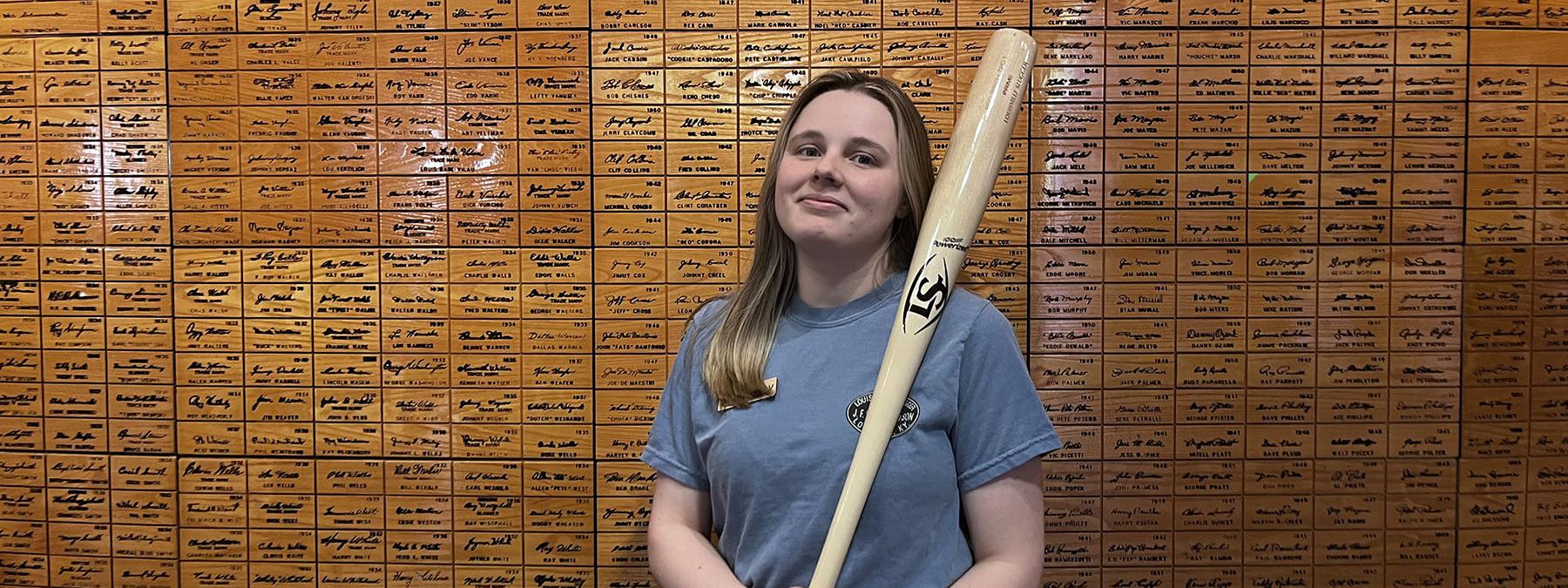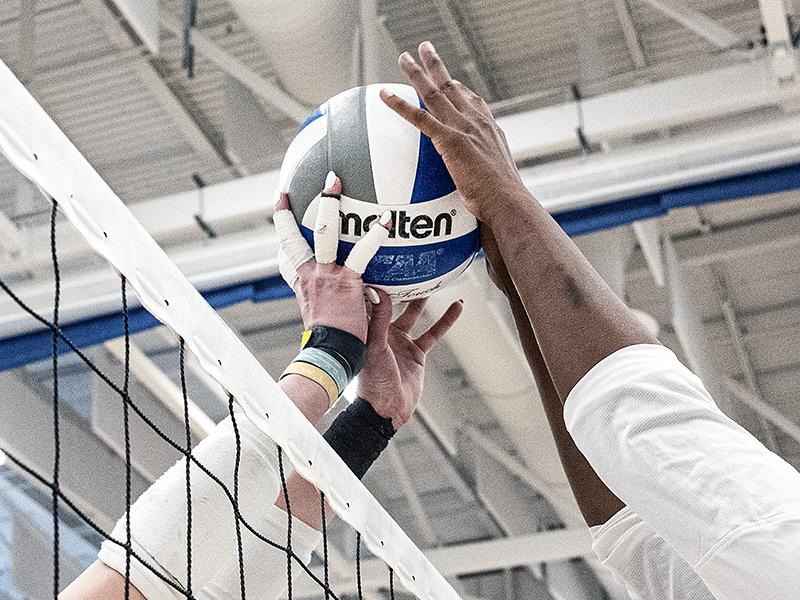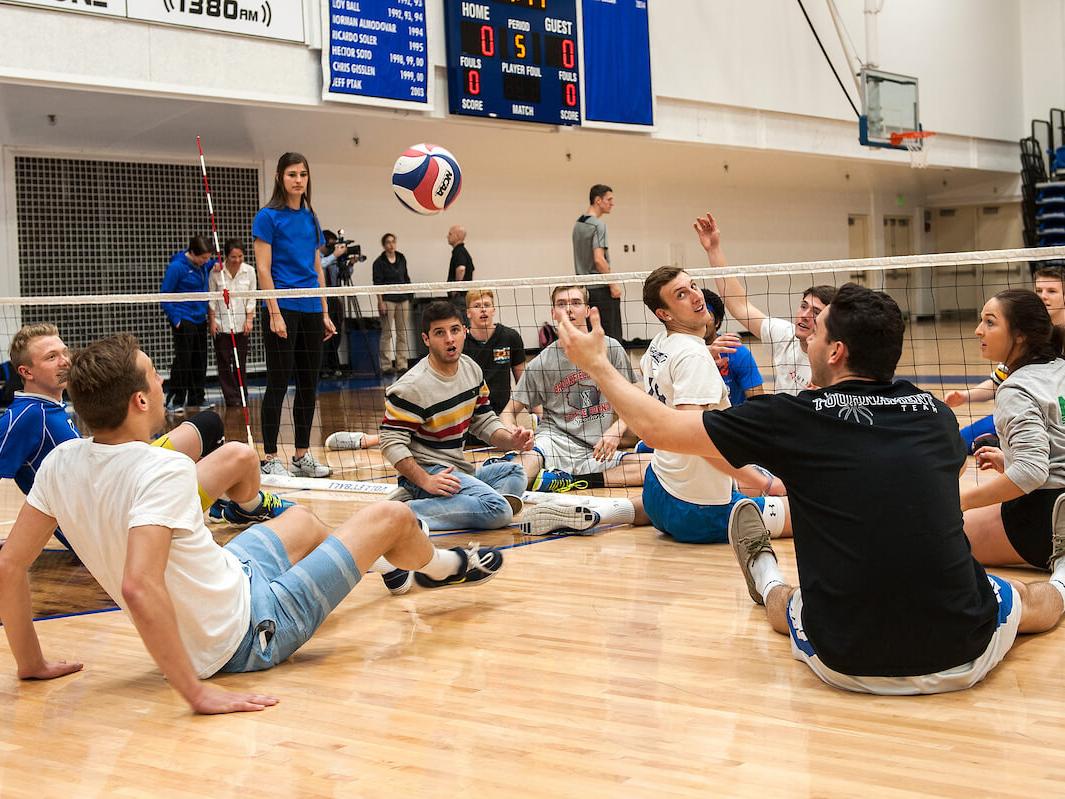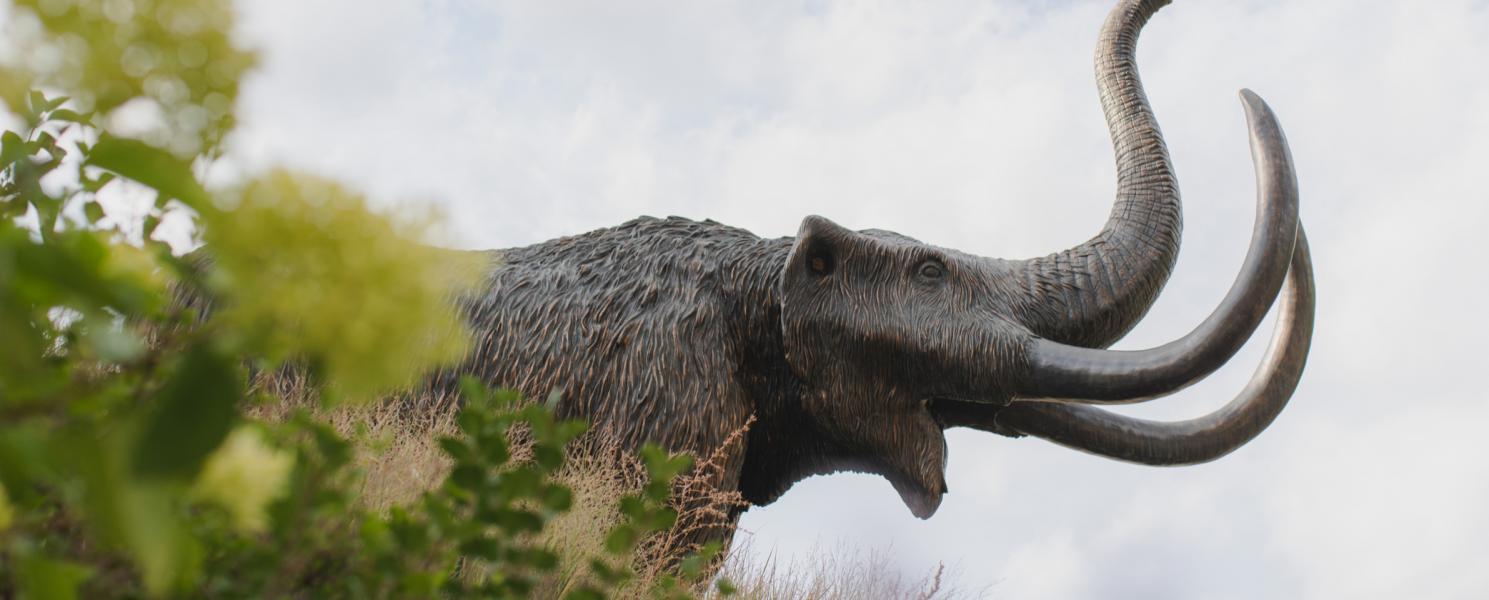
PFW graduate torpedoes confusion surrounding MLB bat phenomenon
By Blake Sebring
May 20, 2025
As torpedo bats recently became Major League Baseball’s hottest topic, a recent Purdue University Fort Wayne graduate has been providing answers to curious fans’ questions.
Maybe the most recognizable brand in the baseball bat business is Louisville Slugger. Its employees had actually been calling this spring’s “new” thing bowling pin bats because of their unique shape, but realized torpedo was a cooler name. The bats allow the maximum impact on the middle rather than the end.
Hailey Bower, B.S. ‘23, is a tour supervisor at the Louisville Slugger Museum and Factory. Using her degree in hospitality and tourism management from PFW, Bower leads up to seven 40-minute tours per day and helps supervise between 25–30 people. She’s been working at the facility for 17 months, and the majority of recent questions have been about torpedo bats. She realized they were “a thing” when her father, Jim, called to ask what she knew about them.
“It’s constant, and I don’t even think I have the worst of it out of anybody here,” Bower said. “There are definitely people who are eating, sleeping, and breathing torpedo bats right now. Fans of baseball want to know all about those bats.”
The bats gained national attention after the New York Yankees used them to belt four home runs in an early-season game. The odd thing, Bower said, is that they’ve been around for a while—and yes, they were approved by MLB before being used.
“We’ve had them at the factory, probably since before I started,” Bower said. “They’ve been around much longer than people think. Some of the Cubs have been using them for more than a year, but they don’t get as much attention as when the Yankees use them.”
Bower comes from a family of baseball fans. Jim follows the Yankees. Her mother, Jenny, the office manager for admissions at PFW, roots for the Cubs, and Hailey’s boyfriend, who played baseball in college, is a Cardinals fan. The Bowers even had a dog, Mickey, named for Mantle, and another named Scooter, for Phil Rizzuto, both former Yankees greats.
The factory offers more than 5,000 variations of baseball bats, and MLB players usually go through 100 per year. Approximately 80–85% of bats are made from maple, 15–20% from birch, and less than 1% from northern white ash. Most of the wood is harvested from New York and Pennsylvania forests.
“Because of Major League Baseball rules, you have to make the torpedo bat out of birch,” Bower said. “Maple is too dense. Suddenly, there’s a massive influx of people asking for these, and they have to be made out of birch, and we don’t always keep a lot of birch on hand.”
The company recently started offering torpedo bats for retail sale. Wood torpedo bats are cheaper than aluminum composites.
“She is kind, compassionate, hard-working, and authentic with our guests and her co-workers,” said Bower’s supervisor Travis Burchett, manager of operations. “Her ability to connect with people was well suited for this role, and with a staff of 25–30 people, that is a critical skill.”
During her time at PFW, it is assumed Bower set the record by leading more than 400 prospective student tours, so she’s used to answering unique questions.
“It’s kind of fun because I’m getting questions I’m prepared for,” Bower said. “I think I’ve definitely changed a lot in the last two years, growing professionally, especially, and trying to learn to think for myself and dealing with the pressure.”
Now, Bower said, she fully understands how well professors in her major prepared her.
“I used to have kind of a bit more narrow world view on the types of jobs I can have, but now I know I can go anywhere and do anything if I’m interested in it,” Bower said. “I don’t have to limit myself to one type of job. I have definitely learned how many more options there are in the industry.”




